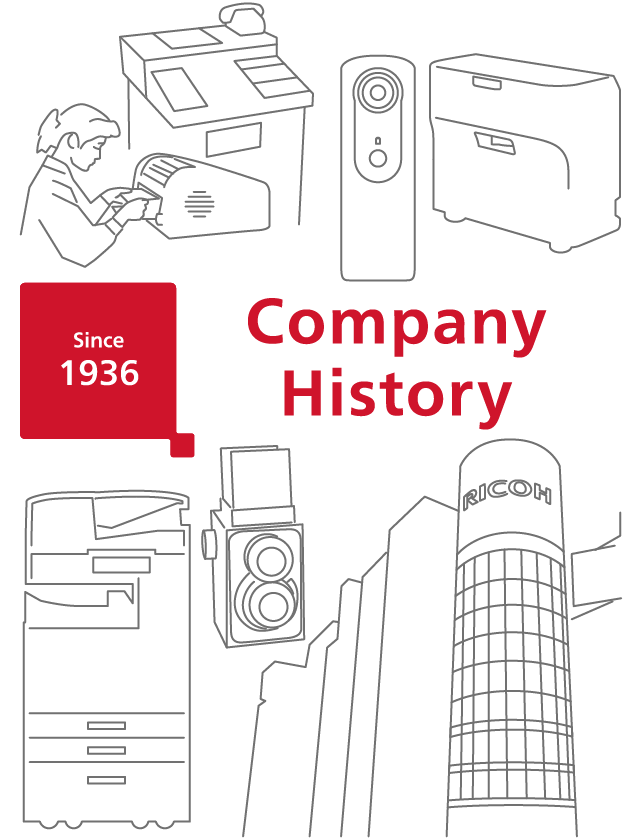

The sensitized paper division of Rikagaku Kogyo split off to be established as Riken Kankoshi Co., Ltd. (–1938)
Learn more
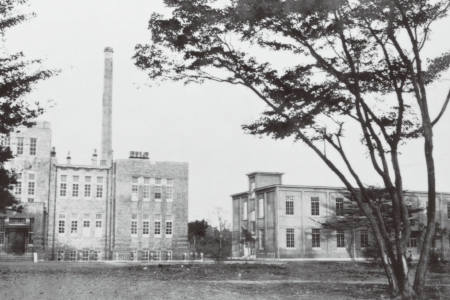
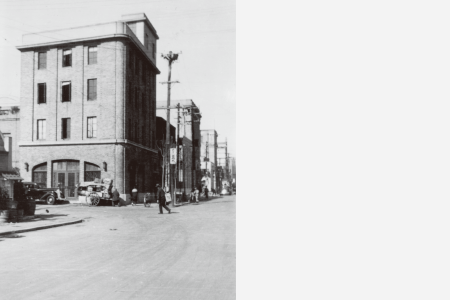
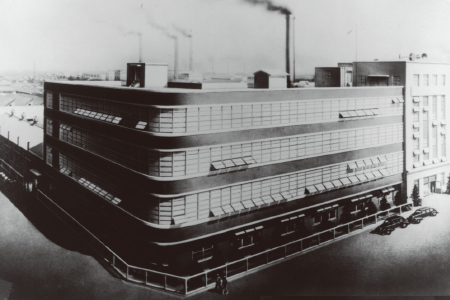
Ricoh's origins date back to a decision by the Institute of Physical and Chemical Research to commercialize the fruits of its R&D by setting up Rikagaku Kogyo. Since its formation in 1927, the business venture has placed on the market numerous products developed by the research institute, including sensitized paper. On February 6, 1936, the sensitized paper division was split off to be established as Riken Kankoshi Co., Ltd., a precursor of Ricoh, under the directorship of Kiyoshi Ichimura (1900-1968). As the founder of Ricoh, Ichimura led the successful development of the business that started with 350,000 yen in capital and a staff of 33.
Kiyoshi Ichimura formulated The Spirit of Three Loves: “ Love your neighbor,” “ Love your country,” “Love your work,” and ever since, they have been respected as the Ricoh Group's Founding Principles, which provide every employee with a guide for business and encourage individuals to constantly improve and contribute to the wellbeing of all stakeholders, including families, customers, and society at large.
Launches the Ricohflex III camera, which spurred the popularization of cameras.
Learn more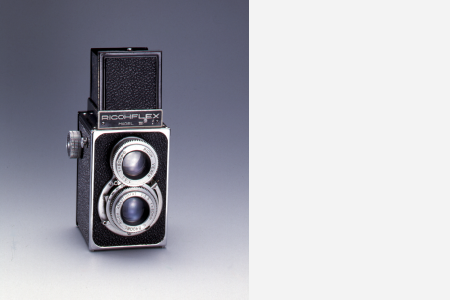
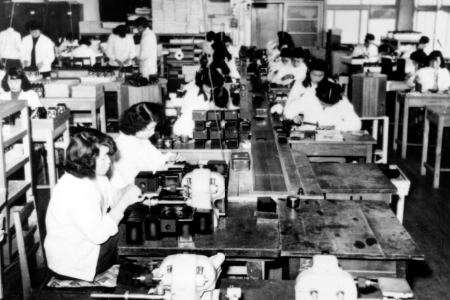
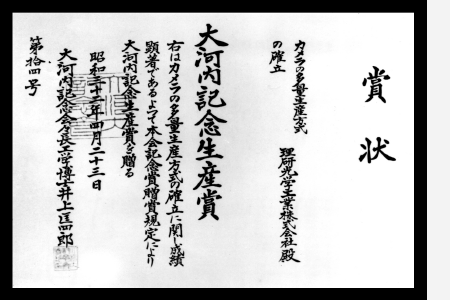
Ricoh was the first company in Japan to introduce a belt-conveyor system for manufacturing cameras, achieving a production capacity of 10,000 units/month—more than ten times the capacity of the then standard level of less than 1,000 units/month from the conventional handicraft industry. Successfully adopting this method of camera mass production, Ricoh offered the Ricohflex Model III at an affordable price, which was remarkably low for an iconic luxury item in those days. This model became highly popular among Japanese consumers, reportedly representing more than 50% of total national camera production during its sales peak.
Introduced Ricoh's first diazo copier, “Ricopy 101.“
Learn more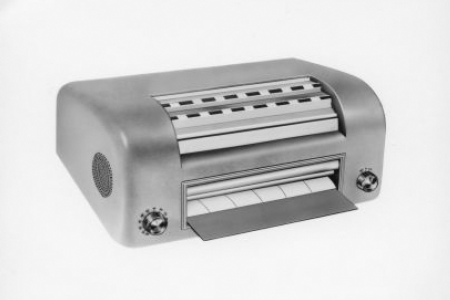

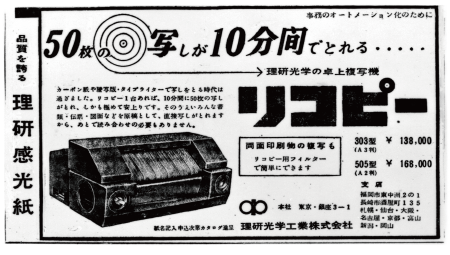
In 1955, Ricoh launched its first office copier, the Ricopy 101. The product became widely popular in the late 1950s, sparking the coining of the term “make a Ricopy,” meaning to “make a copy” in Japan, a representation of the brand that came to be recognized as being synonymous with the concept of duplication. Ricopy 101 and the following desktop diazo-wet copier Ricopy series brought about a revolutionary improvement in office work efficiency, ushering in an age of office automation. The model received the Mechanical Engineering Heritage Certification No.54 for fiscal year 2012.
Related website: Ricopy 101: Forerunner of Office Automation
Numazu Plant, Japan, formed. It features the world's first fully integrated production system of sensitized paper.
Learn more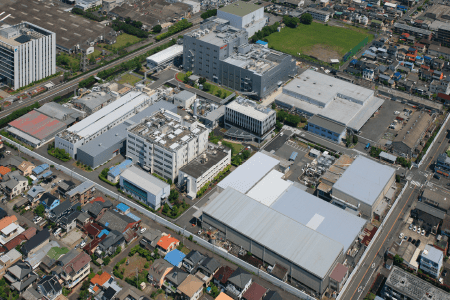
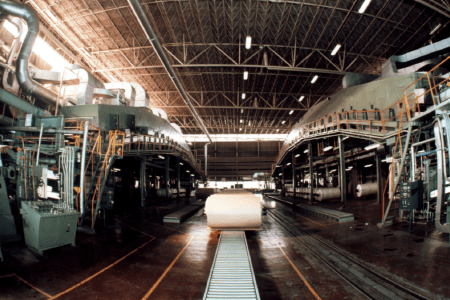

A paper factory was completed in April 1960 in Numazu, Shizuoka Prefecture. Two years later, the plant was expanded by building facilities for manufacturing sensitized paper on the same premises, thereby establishing an integrated production system for sensitized paper that included the base paper manufacturing process—the first of its kind in the world.
Ohmori Plant and General Research Laboratory completed.
Learn more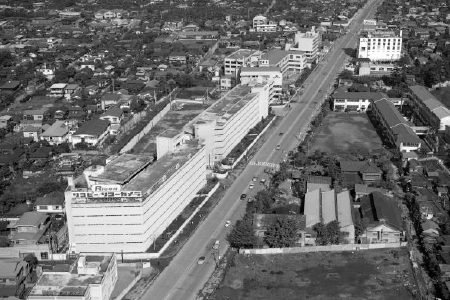


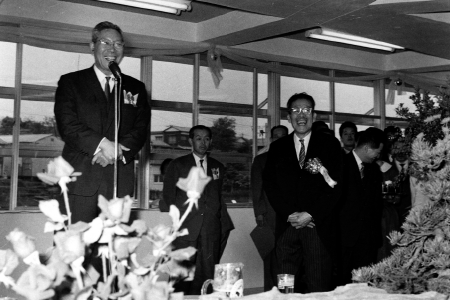
In May 1962, the Ohmori Plant (for manufacturing offce machines) and General Research Laboratory were completed on the premises where the head offce was located. They served as strong Ricoh bases to support expansion of its business areas of microphotography cameras, offset printers, data processing systems, and many others.
Introduces the “Ricoh Auto Half“, a half frame camera that proves to be a massive hit
Learn more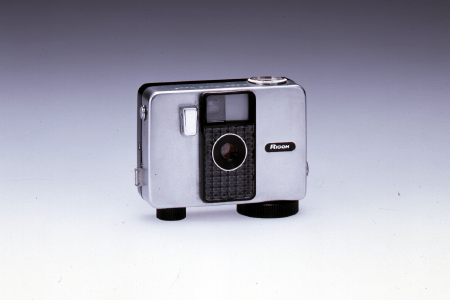
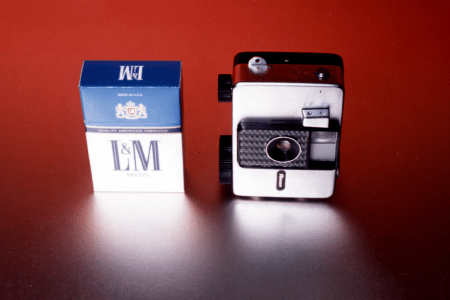
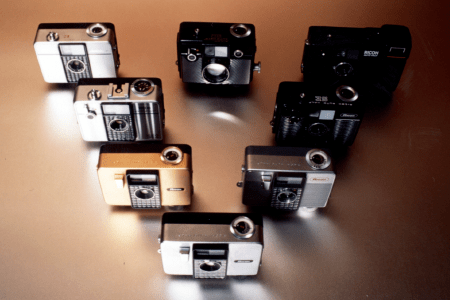
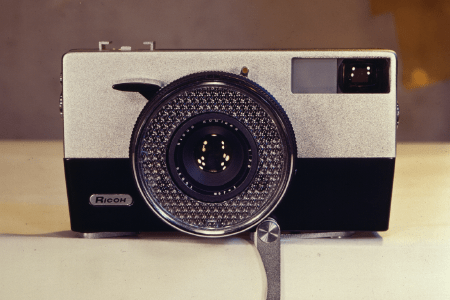
Ricoh is a leading pioneer in the field of automatic camera technologies. In 1960 it released Ricoh Auto 35, the first electric-eye camera developed by a Japanese company; and then in 1962, rolled out the more advanced and handy Ricoh Auto Half—a half-frame, fully automatic camera with automated exposure, focusing and film-winding functions. Being compact, purse-sized and requiring no manual control skills, the world's smallest popular-model automatic camera of the times proved to be a huge hit, particularly with female consumers.
Changes corporate name to Ricoh Company, Ltd.
Learn more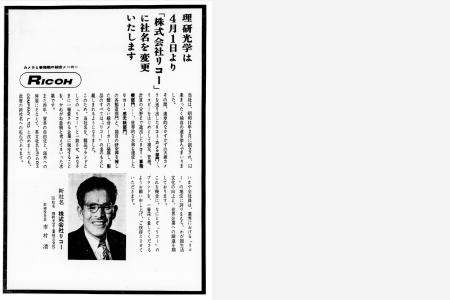
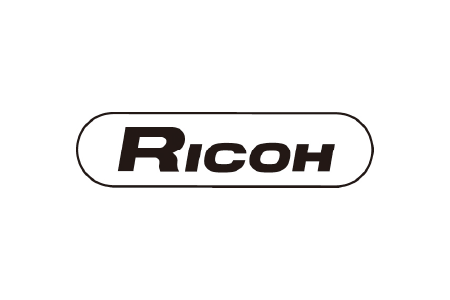
Since being renamed Riken Optical Co., Ltd. in 1938 to represent its diversified business more accurately, the corporate name remained unchanged for a quarter century until April 1963 when the present name, Ricoh Company, Ltd., was adopted in recognition of the company reaching the key milestone of 10 billion yen in sales in the early 1960s. The company made a fresh start under the new name, aiming to make further quantum leaps.
Introduces the “Ricopy BS-1“ as its first electrostatic copier
Learn more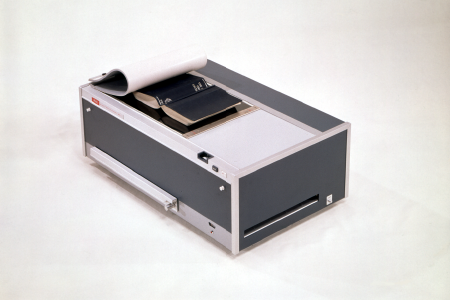
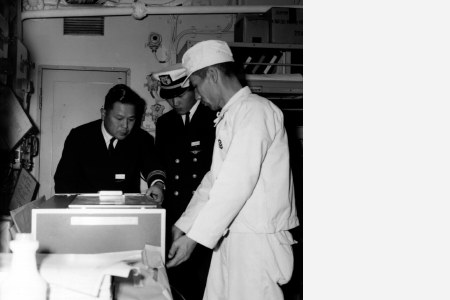
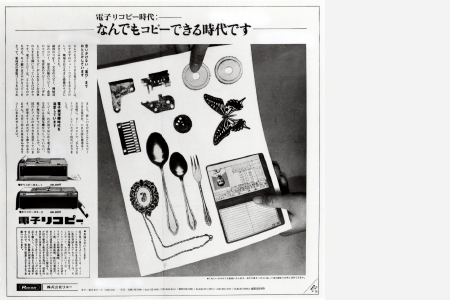
Ricopy BS-1 was introduced in 1965, and turned out to be a key revenue earner that supported the company in its recovery from slumping business. Employing a fixed-platen structure, which marked the world's first desktop copier to adopt that assembly, the product featured increased availability in terms of type of subject to be copied, covering not only paper sheets but also almost everything from books, textiles, jewelry, and machine parts to kitchen utensils. Ricopy BS-1 was viewed as a forerunner in an age when technological progress enabled the “duplication of anything you like,” while serving as a driving force for Ricoh's global business development.
Ricoh of America, Inc. established in New Jersey ( running until 1984), through integration of New York office and Ricoh Industries U.S.A., Inc.
Learn more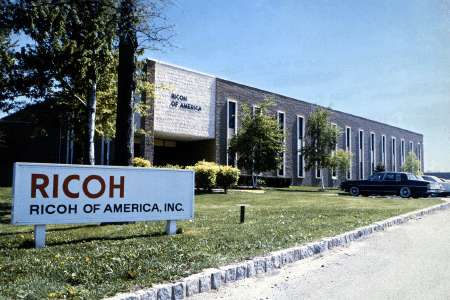
The global success of its hit products provided Ricoh with a stream of opportunities to form technological tie-ups with leading manufacturers in various regions. To facilitate these activities, we set up local affiliates in Taiwan, Korea, the USA and the Netherlands, raising the recognition of the Ricoh brand outside of Japan. The earliest of these was Ricoh of America, Inc., founded in 1970 as the headquarters for our activities in North America.
Ricoh Pavilion appears at Japan Expo '70 with theme "Better Vision for Humanity".
Learn more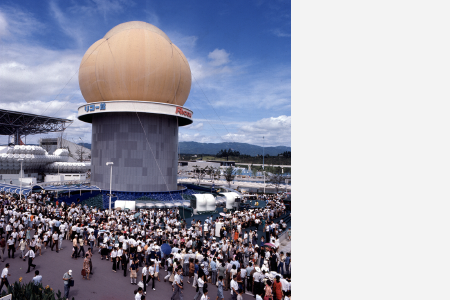
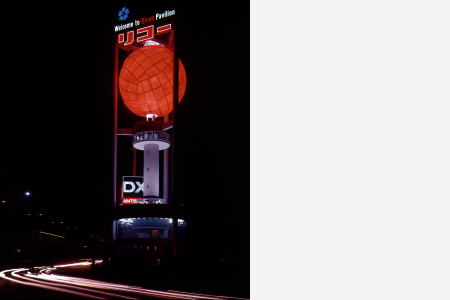
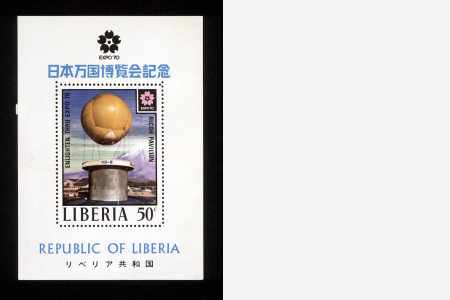
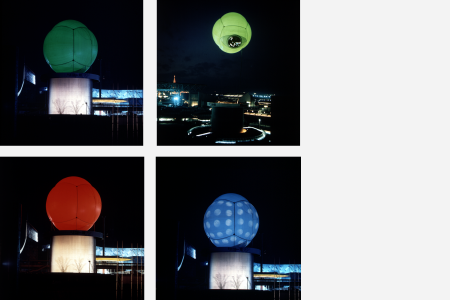
In 1970, Japan Expo '70, the first world's fair in Asia, was held in Osaka over 183 days starting from March 15. Ricoh participated in the event by setting up a pavilion, which was created fully utilizing its technological achievements and in line with the exposition's overall theme of “Progress and Harmony for Mankind.” Our extraordinary exhibition feature a host of unique ideas that impressed many visitors and attracted a total of more than 7 million people at the Ricoh pavilion over the entire period.
Ricoh introduces the “RICOM 8”, the first office computer.
Learn more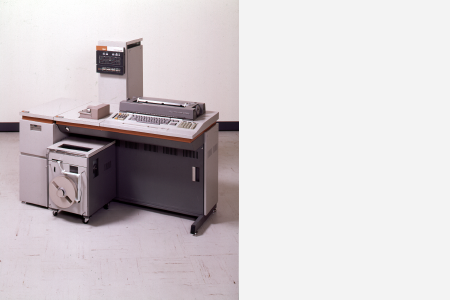
Ricoh was a pioneer in the field of office computer development that saw rapid growth in Japan in the 1970s. This is illustrated by the 1971 introduction of the RICOM 8, the company's first office computer, which was developed jointly with TDK. The embedded magnetic core memory with a 2/4 kilobyte capacity and 64-bit CPU demonstrated exceptional (at that time) storage capability and high-speed performance. The product was also highly regarded for its space- saving tower-structure design.
"RIFAX 600S", first high-speed facsimile machine for offices, succeeds in transmission between Tokyo and New York via satellite communications.
Learn more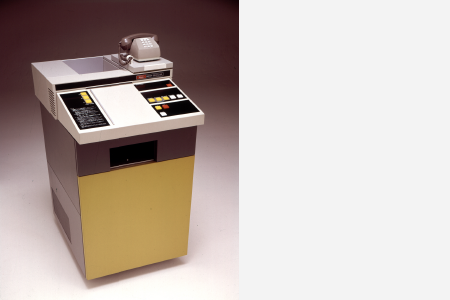
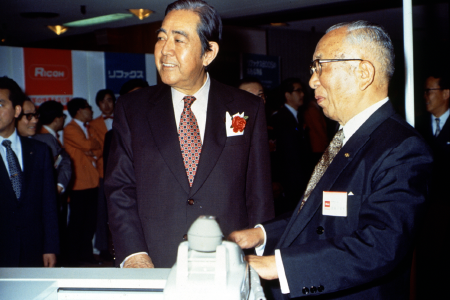
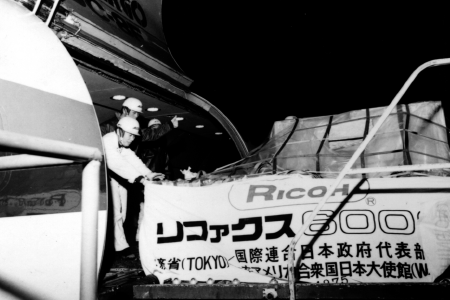
RIFAX 600S was the world's first high-speed facsimile machine for offices, designed to be able to transmit an A4 page in 60 seconds—an outstanding performance compared to the three to six minutes required for contemporary standard models at the time. The product was also capable of international transmission. At the product launch conference held in April 1973, a transmission demonstration was successfully conducted between Tokyo and New York via satellite communications, establishing the global reputation of Ricoh as a leading technology brand. This machine was included in the Essential Historical Materials for Science and Technology list (No.00170) for fiscal 2014.
Ricoh launches the “RICOPY DT1200”, a wet-type plain-paper machine that becoming the world's top-selling copier.
Learn more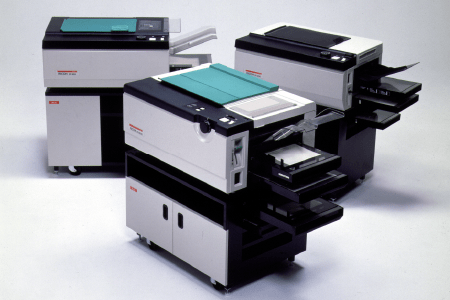
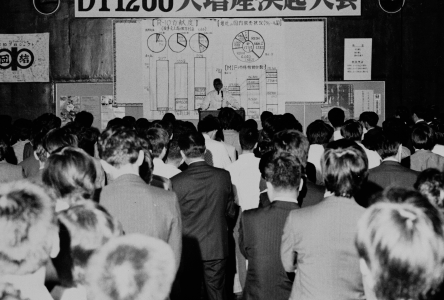
The new RICOPY DT1200 was developed to satisfy the ever-higher expectations of users for plain-paper copiers (PPCs) at that time. We offered this model with confidence as a reflection of its strong features, namely, a single touch switch between two different paper size feeders, marking the first time that such a function had ever been employed for popular model PPCs; a liquid development method employed to consume the entire supply of toner loaded in the machine; and stable functionality for quality results, proven even with one million pages running consecutively, thus reducing the amount of required maintenance work. These superior specifications were highly regarded by many users, particularly in the USA, where in general, availability of maintenance service was geographically limited. In 1991, the RICOPY DT1200 was enshrined in the nation's Copier Hall of Fame to acknowledge the significant role the product played in the history of wet-type copier development.
Ricoh becomes the first recipient for the Deming Prize in the office automation industry.
Learn more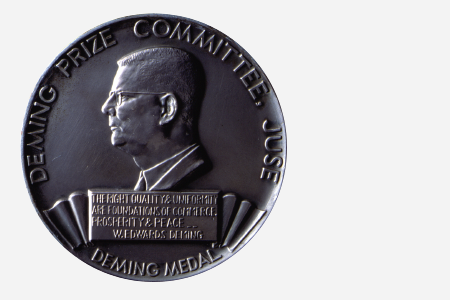

In November 1971, Ricoh introduced a total quality control (TQC) campaign, aiming to build a recession-proof robust corporate structure. We began to conduct various TQC activities throughout the company to improve its management systems, setting as the goal the winning of the Deming Prize, the world's top quality control award. As a result of consistent efforts over the ensuing 46 months, on November 17, 1975, Ricoh became the first office machine manufacturer to receive the Deming Prize. This recognition served to verify our successful structural reform directed at growth in the coming era.
Ricoh introduces the “RICOPY FT4060”, the first dry-toner plain-paper copier.
Learn more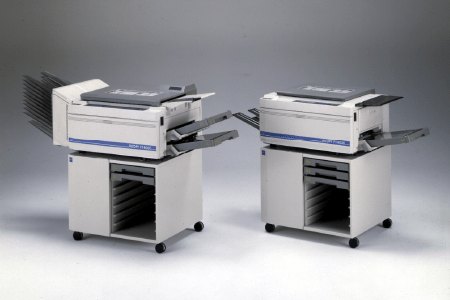
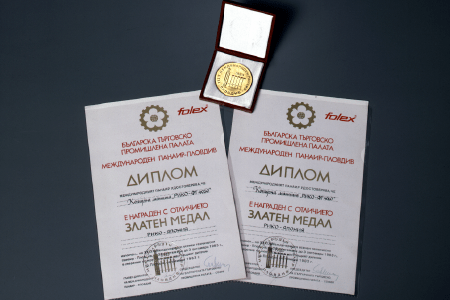
The RICOPY FT4060, an A3-page plain-paper copier (PPC) complete with a zoom feature, enjoyed phenomenal market success, with a total of 100,000 units sold in 10 months from its release. Keys to this success were the model's high definition quality, operational durability and compact body. These properties were achieved through an effective combination of a newly developed electrophotographic imaging system and many other technologies related to mechanism and supply items, including toner. Also, with increased availability for paper type and size, this innovative PPC model contributed considerably to raising the efficiency of duplication work in offices.
Ricoh UK Products Ltd. founded.
Learn more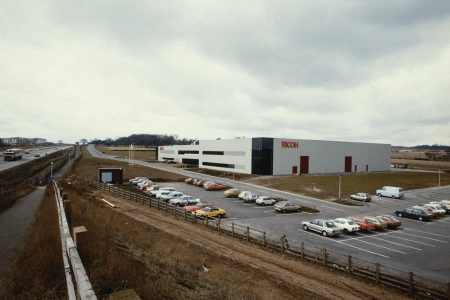
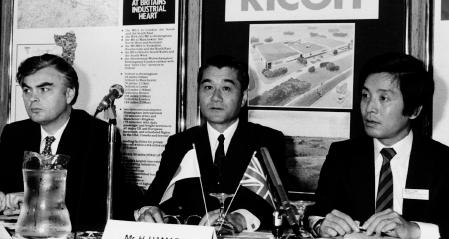
In the 1980s, Ricoh proactively pursued global business development. Export sales grew to account for 34.1% of the total for fiscal 1978, and operation bases were set up in new locations around the globe. Major subsidiaries established at that time included Ricoh Electronics Inc., a manufacturing company for office automation equipment founded in California, USA, in 1979; and Ricoh UK Products Ltd., a manufacturing firm established in Telford, UK, that went on line in December 1983 to produce office automation equipment. Following expansion in North America, an earlier target region for advancement, we began to focus on Europe to build the foundations for future growth.
Ricoh founds Ricoh Research and Development Center in Yokohama in commemoration of 50th year of operations.
Learn more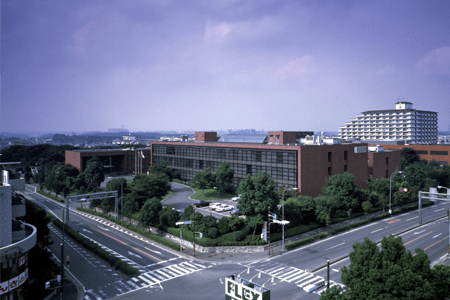
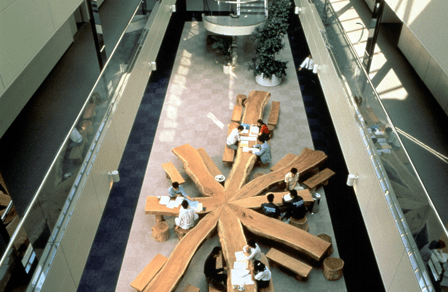
Ricoh Research and Development Center was founded as one of the commemorative events of the company's 50th anniversary. It was set up to become the core function of the company's multi-lab project to enhance its system for comprehensive R&D activities from the long-term perspective. The center opened on April 23, 1986 within the Kohoku New Town district in Yokohama. The facilities cover a total area of 16,700㎡ and include not only a range of laboratories for precision measurement and analysis as well as clean rooms, but also spaces designed to encourage researchers' inventive efforts and interactions. The establishment serves as Ricoh's key R&D base that undertakes a full range of activities, from basic and applied studies to commercial use research.
Releases the IMAGIO 320 office-use digital copier
Learn more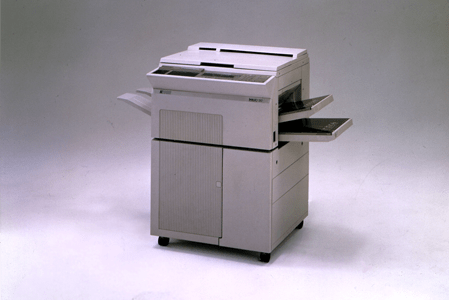
Before the IMAGIO 320 was launched, the commercial photocopier market was dominated by monochrome analog models, with digital models marginalized due to unaffordable unit prices (exceeding 2 million yen on average) and extremely large sizes that prevented their installation in standard offices. To overcome these challenges, Ricoh developed the IMAGIO 320, a more compact and affordable digital copier for office use. We reduced the body dimensions to a practical size and brought the price down to below 1 million yen. In addition, we incorporated multiple advanced features into the model, including functions to reproduce unprecedented image quality, an extensive image editor selection, automatic control, and multifunctionality to enable operational interaction with other office equipment. Being more practical, sophisticated and less costly, the product sold well over 20,000 units in its first 12 months, making it a massive hit.
Ricoh signs a contract of the Worldwide Sponsorship in facsimile machine category for 1992 Barcelona Olympic Games.
Learn more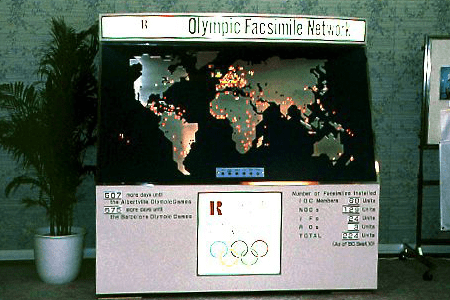
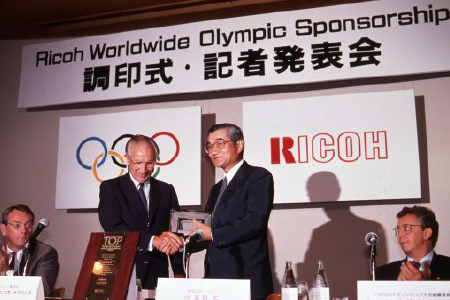
On September 19, 1989, Ricoh signed an agreement to become the 1992 Barcelona Olympics Worldwide Sponsor in the facsimile category. Based on this agreement, the company constructed the Olympic Fax Network to connect the International Olympic Committee (IOC) to around 40 related sports associations in 167 countries. This worldwide network greatly enhanced international communication among the organizations involved, which previously had to rely on postal and telex systems to exchange messages. Through this project, we were able to contribute considerably to a more accurate, speedy and smoother Olympic Games.
Introduces ARTAGE 8000, Ricoh's first digital color copier
Learn more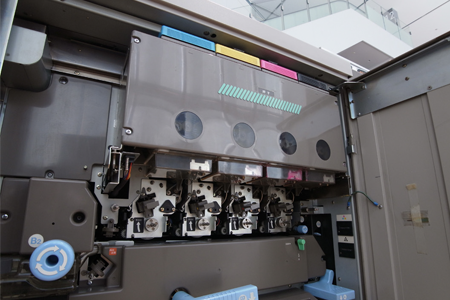
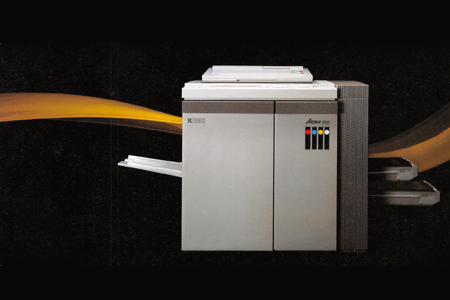
The standard technology adopted for color copiers around 1990 required repeated imaging processing for four colors (cyan, magenta, yellow, and black) loaded on a single drum to reproduce one color copy. This was a time-consuming process, taking about five minutes on average to make one A4-page copy. Identifying an opportunity in this limitation, Ricoh developed a four-drum photoreceptor system that could process the four colors in tandem, which was a vital function built into the new digital color model. The resulting ARTAGE 8000 boasted the capability of an outstanding high-speed color printing output of 15 ppm, which was the world's fastest at that time. The product was also designed to accept various paper types. The introduction of ARTAGE 8000 increased the availability of the color duplication option in routine office operations.
Ricoh wins top award from Japan's Ministry of International Trade and Industry for environmental activities, product assessment and recyclable design.
Learn more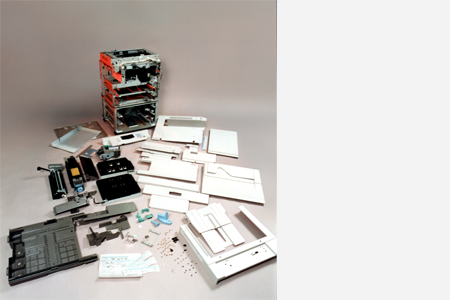
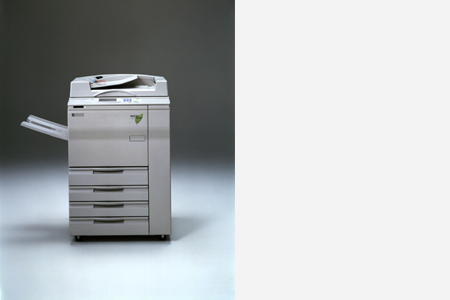
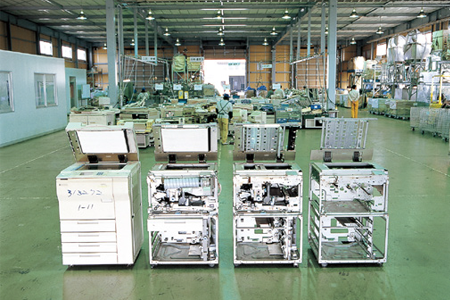
In the early 1990s, Ricoh began to promote sustainable environmental management on a full scale, implementing a variety of activities. One of the key initiatives was the introduction of a recyclable product design. For copy machines, around 20% of the weight of an entire unit is composed of plastic parts, which previously did not undergo disassembly and sorting for reuse since used units were wholly destroyed and disposed of. In 1993, in order to reduce this waste by improving the parts recycling rate, we formulated a recyclable design policy and product assessment system. Our first recyclable design copier was released in 1994. These efforts won public recognition, including the highest prize from the Minister of International Trade and Industry for environmental activities for product assessment and recyclable design in the recycling project award hosted by the Clean Japan Center in 1995. The recyclable design initiative took root in Ricoh as a continual driver of its sustainable
Launches the Ricoh DC-1, Ricoh's first digital camera
Learn more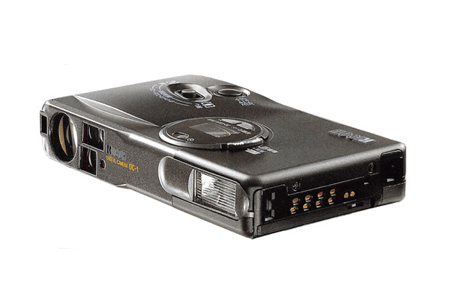
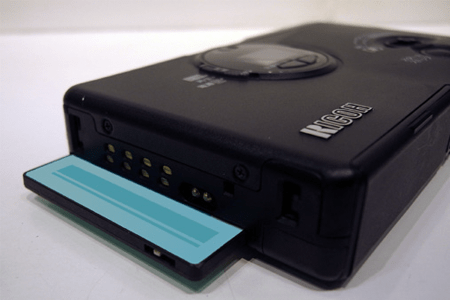
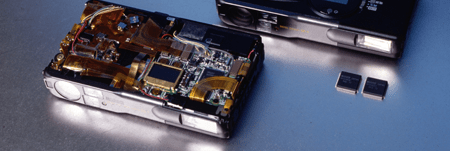
Ricoh DC-1, which employed Ricoh's proprietary image processing technology that had been developed primarily for office automation systems to achieve integrated processing of image and non-image data, pioneered a new front in the digital camera market. This pioneering model featured a handy pocket-size body that housed a set of then leading-edge functions (that have now become standard) such as zoom, data communication, and video recording with sound. Also, to offer the option of data transfer to PCs, necessary applications and image recording media were developed to specifically serve the purpose of this model.
Launches the imagio MF200, low-priced, space-saving digital copier
Learn more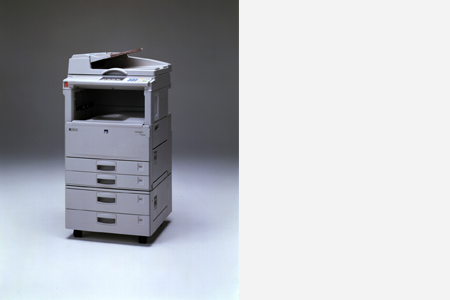
The imagio MF200 realized the turning point in the history of copy machines by sparking the dramatic transition from analog to digital models. It featured digital-enabled high-definition quality, memory for storing data to be copied, a compact body (for an A3-paper support model) with the world's smallest width at that time as well as lower unit prices achieved through rigorous cost cutting efforts. Because of all these outstanding features, the imagio MF200 was particularly popular with smaller corporate users, enjoying enormous sales and becoming a record-breaking hit. Following the rollout of this machine, the digital segment increased to exceed the analog segment in terms of shipment volume in the Japanese market. In the global copier sector, this event provided momentum supporting the trend toward the shift to digital technologies on a large scale.
Ricoh receives Japan Quality Award.
Learn more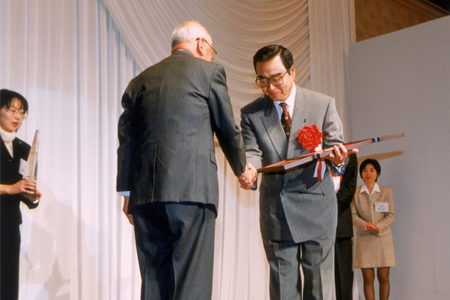
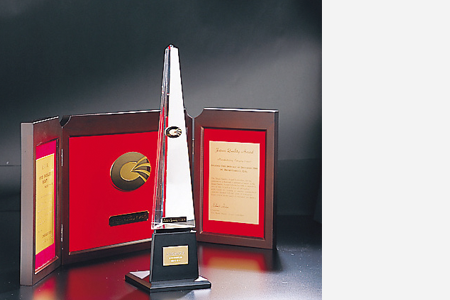
The Ricoh Group is committed to building a management system that allows business to create the value expected by customers in cooperation with them while maintaining a competitive edge over the long term. As one of the relevant approaches taken, the Group started to work on developing a customer satisfaction-oriented management system, and in December 1999, we received the Japan Quality Award in recognition of these efforts. Gaining momentum from this commendation and acknowledgement, we began to globally expand the management quality reform initiatives for improving customer satisfaction while maintaining competitiveness. At each Group company both in and outside Japan, the responsible division carries out evaluations of management quality and implements necessary improvements.
Ricoh receives Minister of Economy, Trade and Industry Award for the advanced environmental friendliness of the "imagio Neo 350 series".
Learn more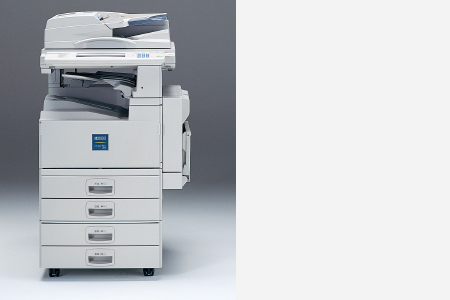
The imagio Neo 350 series, featuring Ricoh's energy-saving technology called QSU*1, won the Energy Conservation Grand Prize*2 for the first time in this sector. News of the award stirred users' interest in the energy efficiency of this digital copier, generating great momentum to the development and widespread use of environmentally friendly models.
*1 QSU stands for “quick start-up,” which is Ricoh's proprietary technology that offers both energy conservation and user friendliness. QSU realizes minimal power consumption when the copier is in the standby mode and quick recovery when the user wants to photocopy.
*2 The Minister of Economy, Trade and Industry Prize in the 11th Energy Conservation Grand Prize.
Inaugurates the Ichimura Nature School Kanto for youth education and development
Learn more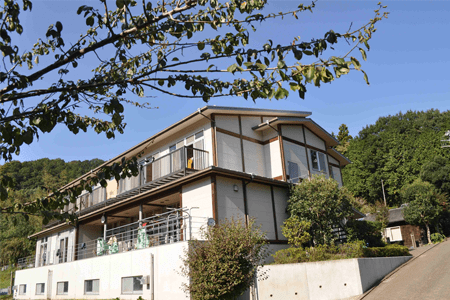


The Ichimura Nature School is an NPO for youth development founded in commemoration of the 100th anniversary of the birth of Kiyoshi Ichimura, the founder of Ricoh and the Ricoh San-ai Group. It was established in Matsuda-machi, a town in the Ashigarakami District of Kanagawa Prefecture in October 2001. Based on the concept of “learning how to live from Mother Nature,” the project offers farming and other programs for children to provide them with opportunities to develop leadership skills and a self-reliant attitude.
Ricoh Technology Center established in Ebina, Kanagawa Prefecture, Japan.
Learn more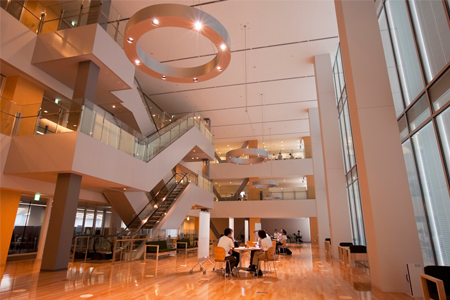
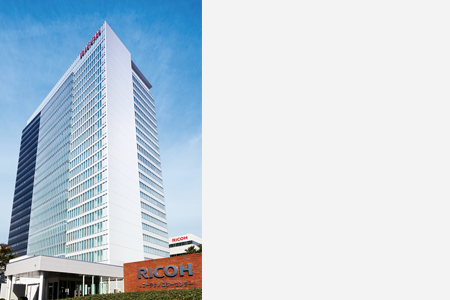
Ricoh Technology Center was established to consolidate development functions for imaging and solutions products (MFPs, printers, etc.) that were formerly located in separate sites in Japan, including the Ohmori Plant (Tokyo) and Atsugi Plant (Kanagawa Prefecture), into a single center. The organizational integration was planned to streamline activities in a range of development areas, from element technology and production technology to product assessment, spurring cross-divisional, cross-functional activities, thereby improving development efficiency.
Construction of mass-production plant for polymerized toner,"PxP toner", completed at Numazu, Shizuoka Prefecture, Japan.
Learn more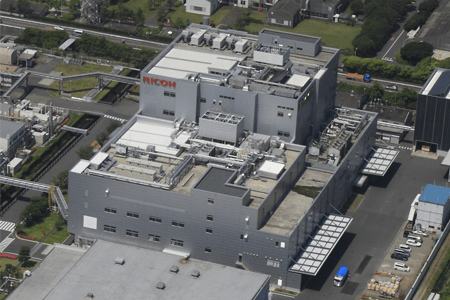
PxP toner is a polymerized toner with polyester developed by Ricoh, applying its original ester elongation method. While offering higher-definition quality achieved by fine, uniform and highly shape-controllable particles, this toner allows for lower-temperature fixing, thereby contributing to energy-saving machine operations. In addition, CO2 emissions stemming from the manufacturing process can be reduced to around 65% of those of conventional ground toners. To start mass production of the PxP toner, a new plant was constructed on the premises of our Numazu Plant in Shizuoka Prefecture.
Major new billboard lights up a top the San-ai Dream Center, Ginza, Tokyo.
Learn more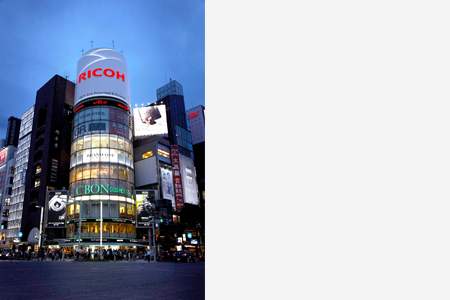
San-ai Dream Center is a commercial facility which was completed in January 1963. The project was organized by Kiyoshi Ichimura, the founder of Ricoh, who wished to create a symbolic structure of the Ricoh San-ai Group. In 2006, a new billboard was installed on top of the building in celebration of the 70th anniversary of Ricoh's founding. The lighting installation was designed to present a vibrant image of new sprouts shooting and flower buds opening under the theme of “birth and growth.” This was replaced in September 2014 by the present 100% natural energy powered billboard.
Ricoh Technology Center wins the Nikkei Manufacturing Award, first in the Ricoh Group.
Learn more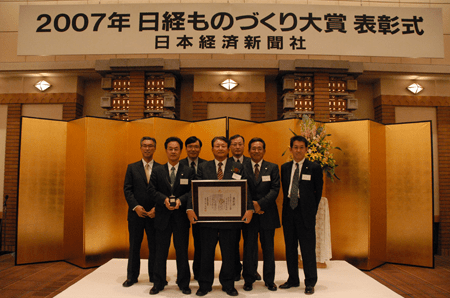
Ricoh Technology Center in Ebina, Kanagawa Prefecture, received the fourth Nikkei Manufacturing Award hosted by The Nikkei, a well-known financial daily in Japan. The Nikkei Manufacturing Award recognizes excellent factories, R&D centers as well as programs and systems adopted in these facilities. The Ricoh Technology Center received the award for successful initiatives in development process reforms that increased efficiency by consolidating formerly separate divisions for development, design and pre-production into a single organization to encourage cross-functional activities.
Ricoh enters the color Print-On-Demand market and introduces a color producton printer,“the Ricoh Pro C900”.
Learn more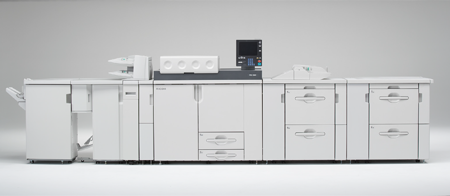
RICOH Pro C900 was launched to pioneer the RICOH Pro series, a new production printer brand. The product was a full-fledged print-on-demand model designed to demonstrate the high-speed, high-productivity capability of achieving 90ppm (A4 landscape) for both color and monochrome copying. It represented the fastest performance model in the category*, and satisfied the high-standards required in commercial production printers, in terms of definition quality, stable performance and reliable operation.
*Color production printers marketed at a standard unit price of 30 million yen or less (as of May 7, 2008)
Releases Ricoh's first reconditioned digital full-color MFPs, the “imagio MP C3500RC/C2500RC series”
Learn more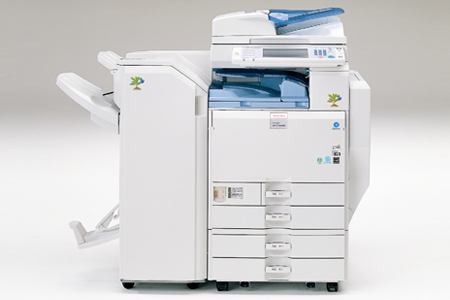
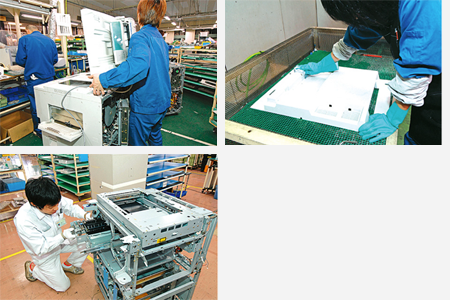
Reconditioning products is an important resource-recycling project at Ricoh. Products are reconditioned mainly by using parts that meet our quality assurance standards. The imagio MP C3500RC/C2500RC series was Ricoh's first reconditioned digital full-color MFP series. While attaining an average 80% mass content of reused parts, these models met quality standards on par with newly manufactured products*.
*Products wholly composed of newly manufactured parts or like-new products containing some remanufactured parts
Ricoh Institute of Sustainability and Business Opens.
Learn more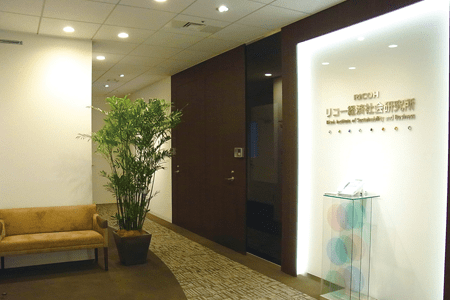
The Ricoh Institute of Sustainability and Business was established to perform two major roles: a think tank function to engage in socioeconomic research to identify future trends and their expected impact on corporate management; and an advisory function to provide the management team with advice and to raise potential issues based on the results of the conducted research. The two functions work respectively to accurately understand the transformation of social and economic structures behind the constantly changing business environment and conduct more effective analyses taking a closer view of the Group's specific management situations.
Ricoh enters the Unified Communication System Business.
Learn more
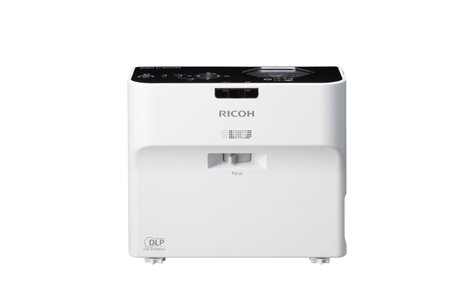
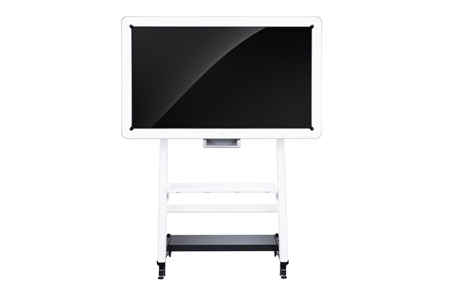
Ricoh entered the visual communication sector by offering systems for conveying various forms of information, including images and sounds, efficiently through a single tool. We have introduced a stream of innovative products to advance business communications. Among the major examples are: the Unified Communication System (USC), a videoconference/web conference system for Internet-based visual communication between internal/external corporate organizations, which is provided by creating cloud-based platforms optimized to enable real-time interactive and multi-point communications for each customer; an ultra-short-throw projector; and an Interactive Whiteboard (IWB).
Establishes PENTAX RICOH IMAGING COMPANY, LTD.
Learn more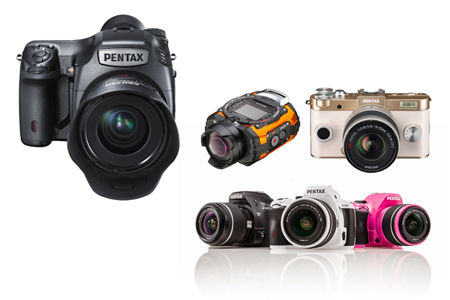
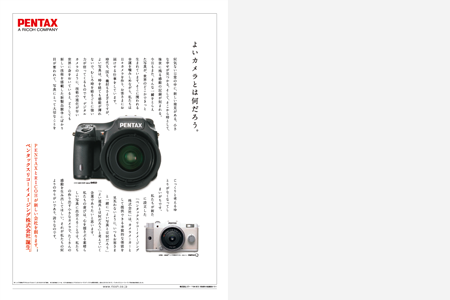
PENTAX Ricoh Imaging Company, Ltd. was established to become a wholly owned subsidiary of Ricoh, effective on October 1 , 2011.Through this move, the firm rebuilt its offerings based on the PENTAX brand lineup of DSLRs coming with a broad lens selection, adding to it Ricoh's existing digital camera range, with a greater focus on consumer products and services. In August 2013, the company changed its name to the present Ricoh Imaging Company, Ltd.
* present Ricoh Imaging Company, Ltd.
Launches RICOH THETA, the world's first imaging device that captures fully spherical views.
*
*As a mass-produced, consumer product capable of capturing the scene around, above and below the device in a fully spherical image (as of October 2013, based on Ricoh Imaging Company Ltd. research).

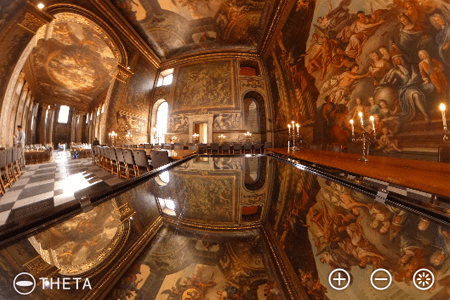
RICOH THETA can capture an all-round view surrounding the photographer with a single shutter release and produce the result as a fully spherical image. This invention, the world's first of its kind*, was achieved by employing a micro twin-lens reflex optical system developed by Ricoh to enable the capture of an entire view of the surrounding space, including areas above and below the device. Our wish is that the product will stimulate a new passion in photography by producing unexpected, unique results that can be shared with people around the world.
* Consumer Product noted for ability to capture fully spherical images, rather than panoramic or semi-spherical images with a single shutter release (based on Ricoh Imaging research, as of October 2013)
Launches the additive manufacturing (AM) business
Learn more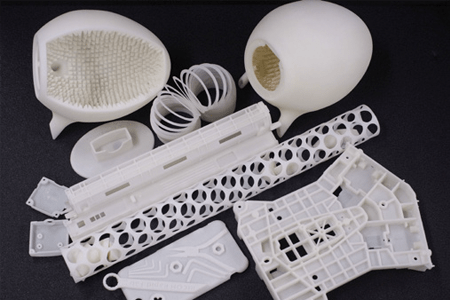
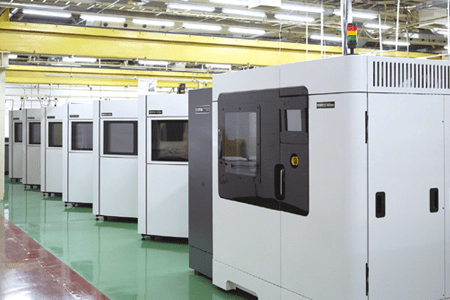
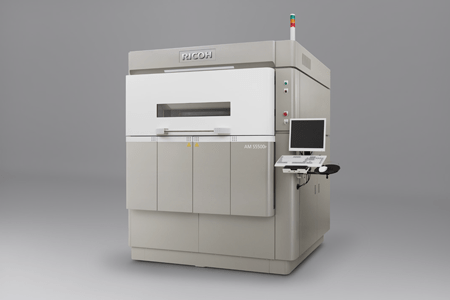
Ricoh's additive manufacturing (AM) business, which the Company launched, is centered on 3D printers. The initial project in this business was to open RICOH Rapid Fab, a base for offering manufacturing innovation solutions. It is a frontline base for the 3D printers business, tasked with procurement and marketing, output service, and providing consultation and proposals using insights drawn from internal actual usage. We plan to expand the business from Japan to global locations.
Released RICOH-SV-M-S1, an industrial stereo camera which can take accurate and speedy 3D measurements. (Ricoh Industrial Solutions, Co., Ltd.)
Learn more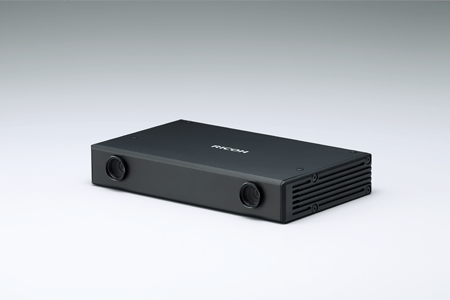
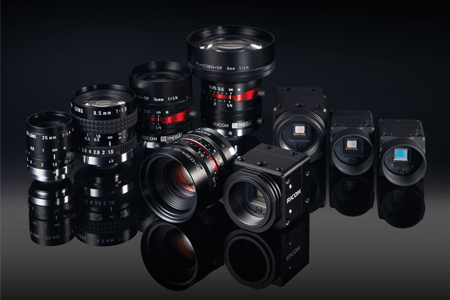
RICOH SV-M-S1, rolled out by Ricoh Industrial Solutions Inc., is an industrial-use stereo camera system for high-speed, high-accuracy 3D measurement. It is intended for use in supporting the automated control of a system through 3D measurement of related objects, or figuratively, playing the role of the “eye” of the system. The product boasts a high precision range of ± 0.1% (actual measurement value), which was achieved by applying Ricoh's refined calibration technology. And its high frame rate of 30 fps designed for 3D measurements has been made possible by incorporating functions related to a range of processes from photographic image processing to parallax computation into the main structure from which it works, thereby delivering faster data processing. SV-M-S1 is offered from Ricoh's broad lineup of camera systems for factory automation (FA).
Ricoh's VCSEL receives the Science and Technology Award
Learn more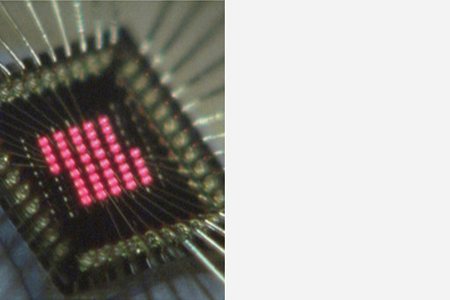
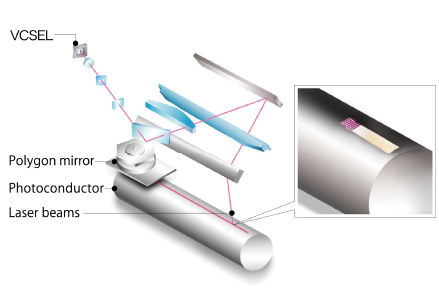
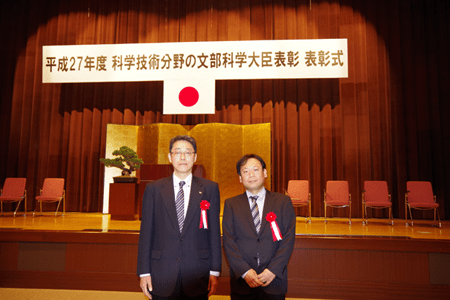
Ricoh's 40-channel vertical cavity surface emitting laser (VCSEL) technology was selected for the fiscal 2015 commendation by the Minister of Education, Culture, Sports, Science and Technology, and two development leaders-Shunichi Sato, chief engineer at Ricoh Future Technology Laboratory (FTL), and Naoto Jikutani, researcher at the FTL's Tohoku branch-receiving the Science and Technology Award from the Ministry. The acknowledgement was offered for technological achievements that have enabled print-on-demand (POD) printing systems to effectively respond to the recently growing demand related to high-mix, low-volume, quick delivery orders. Being able to minimize wasteful output, the product is also beneficial for environmental conservation.
Opened RICOH Future House, a commercial facility which offers solutions and services for supporting development and growth of local communities.
Learn more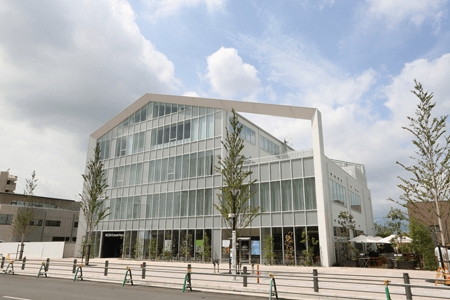
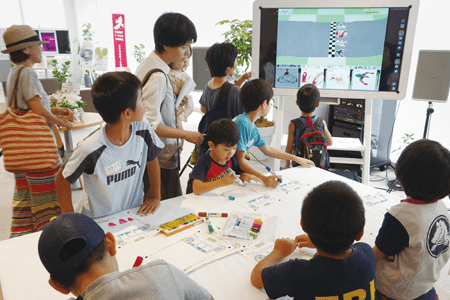
RICOH Future House is a new-concept commercial facility project planned with the hope of creating opportunities in which local people can gather, learn, and work for building a better future. The House, employing the structure of a fully glazed front façade to produce a sense of openness, consists of four floors, each designed to serve different types of learning and working purposes catering to a wide range of age groups. Specifically, the facility houses science and technology labs for children, event and seminar areas, and co-working spaces in addition to a restaurant and café lounge, and a printing service shop.
“RIFAX 600S” was honored by The Institute of Electrical Engineers of Japan as one of the “One Step on Electro-Technology” products in 2016
Learn more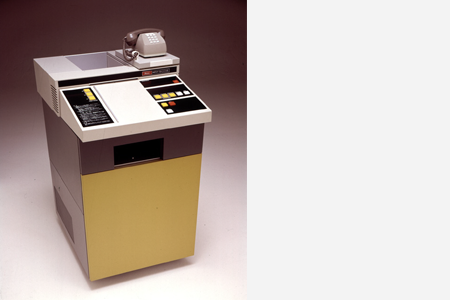
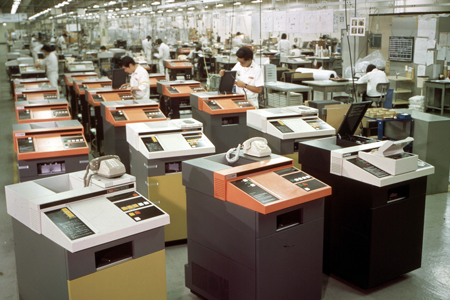
The RIFAX 600S was awarded the “One Step on Electro-Technology” prize by The Institute of Electrical Engineers of Japan. The reason for the award was that the RIFAX 600S could transmit an A4 standard page in one minute, six times faster than the analog facsimile. It greatly contributed to facsimile popularization. This digital technology set an international standard and led to the development of a multifunctional printer that combined copying, printing, scanning and facsimile functions in one unit. Consequently, it promoted the progress of Office Automation equipment and innovated effective office work.
Entered the healthcare solutions field
Learn more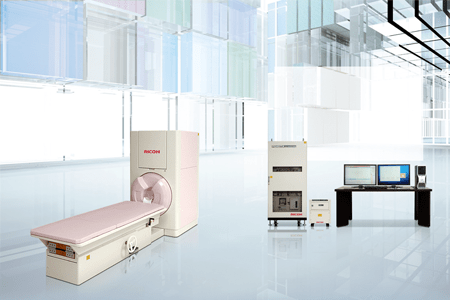
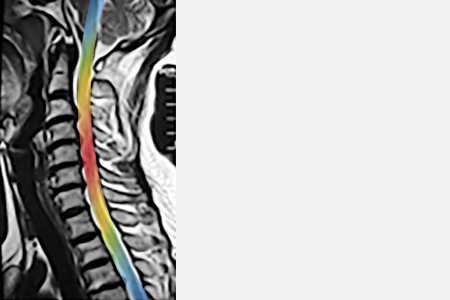
Population aging in advanced nations, particularly in Japan, has created major social issues. These include surging healthcare costs and widening gaps in regional medical standards. The Ricoh Group, drawing on its technological prowess, has entered the healthcare field to help overcome these challenges. We acquired the magnetoencephalography* business of Yokogawa Electric Corporation in April 2016.
* Magnetoencephalography maps the neural activity of the brain
Here, our three key focuses are on medical imaging, healthcare information technology, and biomedical domains. We will combine the medical equipment development and business knowhow we secured through that acquisition with the imaging technology, systems design capabilities, and production expertise of our core operations to help prevent, swiftly identify and treat illnesses, and in doing so help resolve social issues.
RICOH Eco Business Development Center opened
Learn more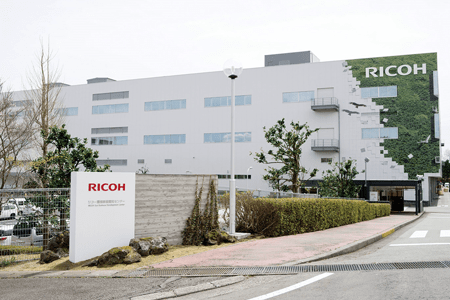

The “Ricoh Eco Business Development Center” was founded as a project to commemorate the company's 80th anniversary. This center has three major functions: the “Reuse & Recycling Center”, a “center for verification of eco-business technologies”; and a “source to distribute information regarding eco-business activities”.
The center for verification of eco-business technologies harnesses open innovation between industry, academia, and government in collaboration with partners to accelerate the creation of eco businesses. Since the 1990s, Ricoh has focused its efforts on “environmental management” to simultaneously reduce environmental impact and create additional sources of revenue & profit. The company will further advance the scope of this “environmental management” and aims to create eco-businesses in a broader range of fields, not limited to the domains it has focused on in the past. This will further evolve with customers, who will contribute to achieving a more sustainable society.
Yoshinori Yamashita appointed President and CEO
Signs Japan Climate Action Summit declaration

Launches the RICOH IM C series of advanced MFPs, which draw on the state-of-art cloud services and AI
Develops the world's first inkjet technique-based technology to manufacture lithium-ion secondary batteries in desired shapes

Launches the RICOH EH DSSC series, the world's first solid-state dye-sensitized solar cell (DSSC) modules that generate renewable energy allowing electronics to maintain a charge.